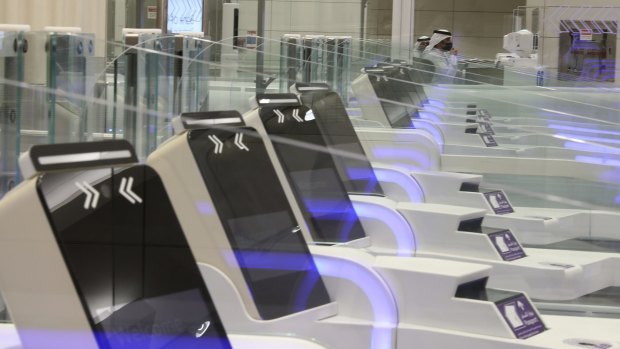
Facial recognition gates at Dubai airport.Credit: AP
Imagine you're checking in for your next flight using an app on your smartphone at a contactless check-in terminal which prints out a baggage label. Then, you use another app which gets you through passport control, through the terminal right up to the time you're seated on board your aircraft. No physical passport, no boarding pass. That's what facial recognition can do, one of the technologies that fall under the umbrella of biometrics, the measurement of physical characteristics.
Using a computer algorithm, facial recognition technology compares a live image with that embedded in a passport, a driver's licence or an app with a certified digitised image. Most international travellers have experienced the SmartGate technology Australian Border Force has been using to process incoming and outgoing passengers for several years, matching facial recognition data recorded on a live image with the identifiers embedded in ePassports. The US Customs and Border Protection agency has been using a similar technology since 2018 while the EU is rolling out its biometric Entry/Exit System at all points of entry.
Compared to queueing up for a manual check of your passport by a border control officer at a booth, presenting your ePassport at a scanner and posing for a mug shot is a breeze. There have been glitches, for example the higher failure rate for people of colour, and some travellers have data-security concerns, but overall biometric processing has proven to be fast and accurate. So much so that it's now being used ever more extensively at airports and by airlines in Australia, the US, Europe and in India. In a pilot project at Sydney and Brisbane domestic airports, Qantas trialled facial recognition to process more than 5000 passengers, using their image instead of a boarding pass to board hundreds of flights. In the future, a smartphone app might even replace your passport.
Facial recognition technology has potential applications in other areas of the travel industry, such as hotels, which could mean skipping the check-in queue and heading straight to your room. The ultimate aim is seamless travel - contactless, fast and foolproof. Just don't lose your smartphone.
Sign up for the Traveller newsletter
The latest travel news, tips and inspiration delivered to your inbox. Sign up now.